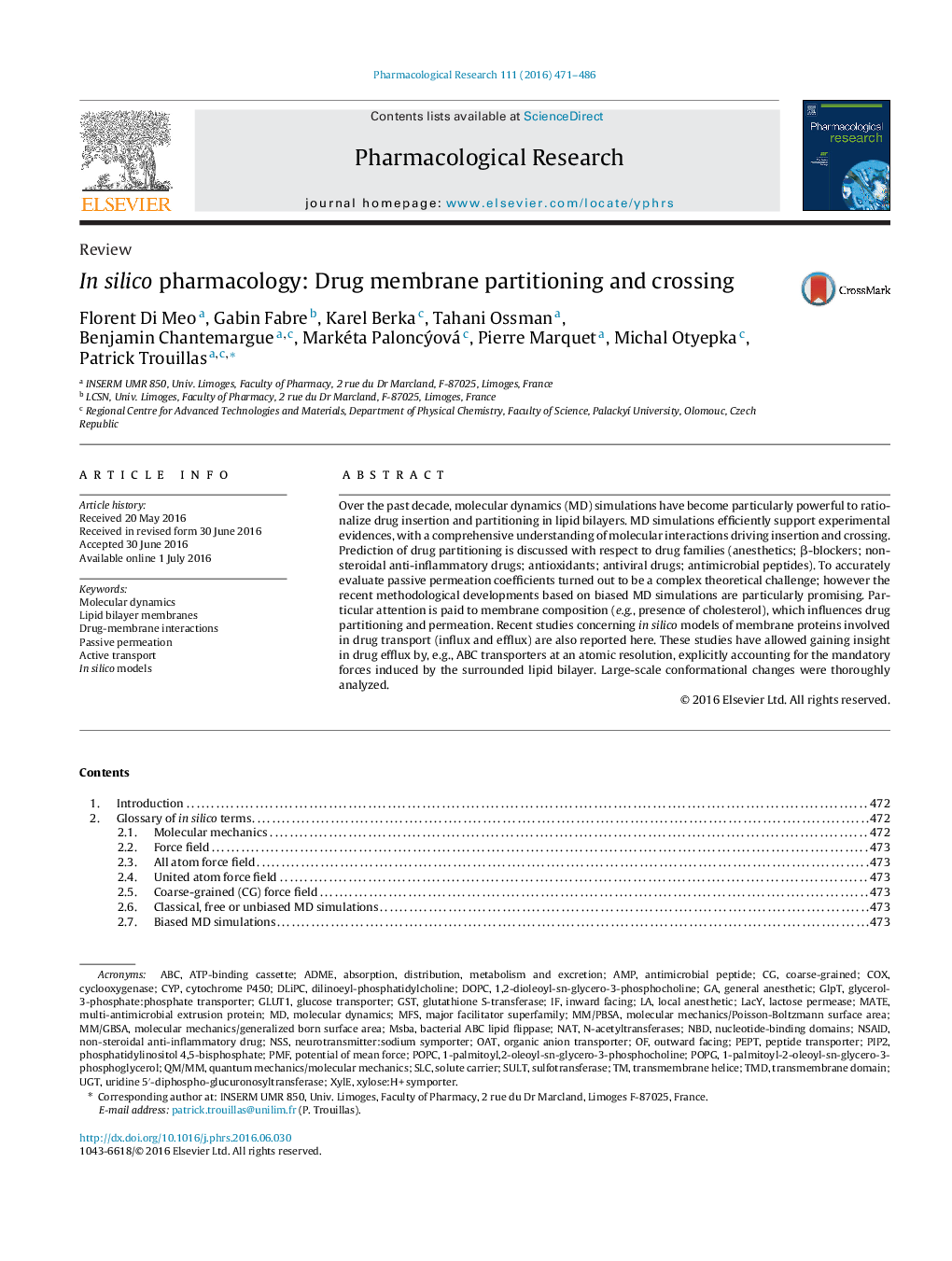| Article ID | Journal | Published Year | Pages | File Type |
|---|---|---|---|---|
| 5843542 | Pharmacological Research | 2016 | 16 Pages |
Over the past decade, molecular dynamics (MD) simulations have become particularly powerful to rationalize drug insertion and partitioning in lipid bilayers. MD simulations efficiently support experimental evidences, with a comprehensive understanding of molecular interactions driving insertion and crossing. Prediction of drug partitioning is discussed with respect to drug families (anesthetics; β-blockers; non-steroidal anti-inflammatory drugs; antioxidants; antiviral drugs; antimicrobial peptides). To accurately evaluate passive permeation coefficients turned out to be a complex theoretical challenge; however the recent methodological developments based on biased MD simulations are particularly promising. Particular attention is paid to membrane composition (e.g., presence of cholesterol), which influences drug partitioning and permeation. Recent studies concerning in silico models of membrane proteins involved in drug transport (influx and efflux) are also reported here. These studies have allowed gaining insight in drug efflux by, e.g., ABC transporters at an atomic resolution, explicitly accounting for the mandatory forces induced by the surrounded lipid bilayer. Large-scale conformational changes were thoroughly analyzed.
Graphical abstractDownload high-res image (186KB)Download full-size image
